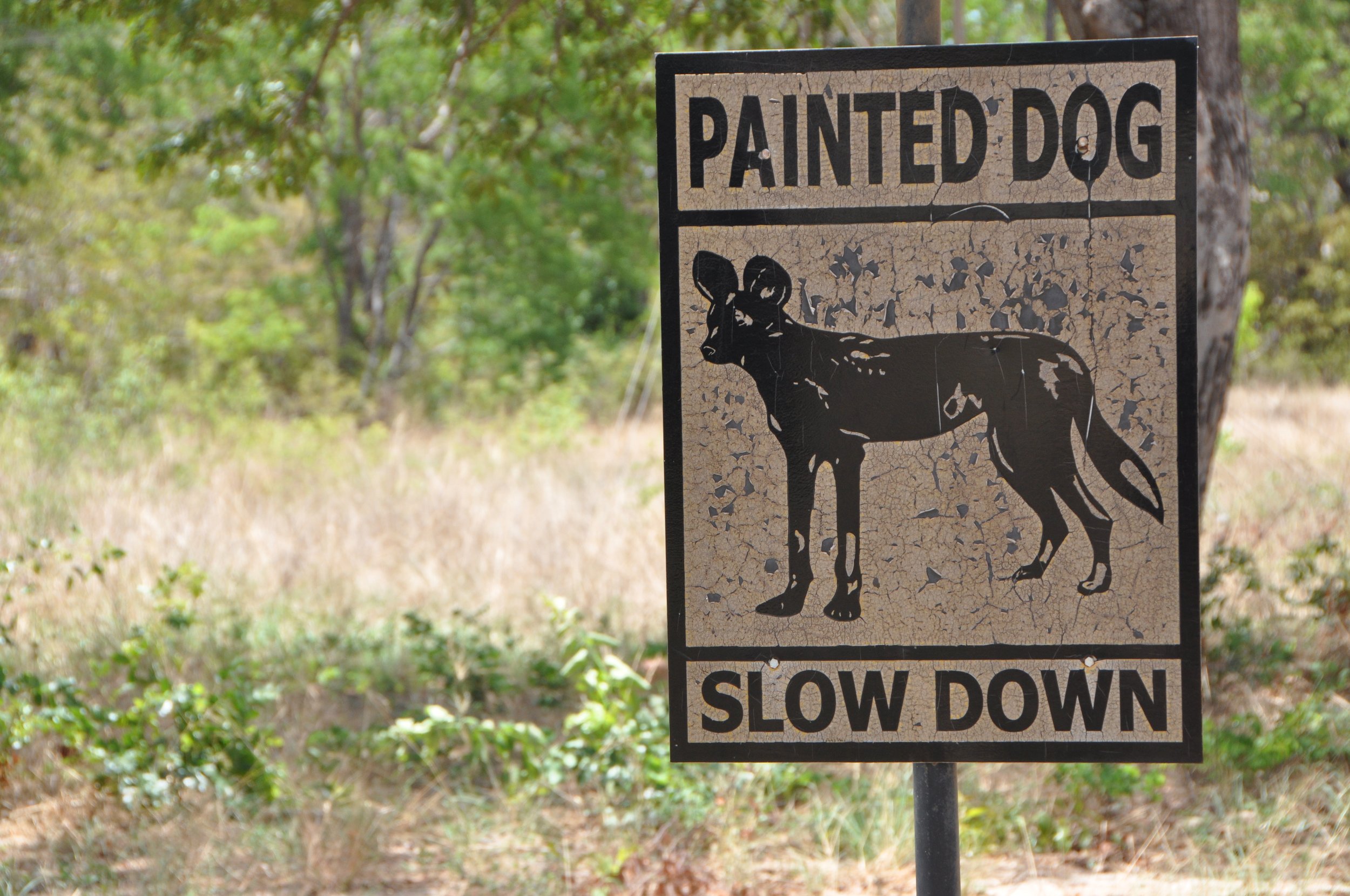
How to protect wild dogs
Conservation lessons in Zimbabwe
There are only a few thousand wild dogs left in the whole of Africa. In Zimbabwe, students learn to protect the endangered animals.
Pictures: John Goodwin
In the midday heat, Professor stalks through the dense forest. He stops at a tree, looks closely at the leaves, then searches for bite marks on the bark. Was an impala on the move here, or perhaps a kudu? Professor makes notes in his arboricultural notebook. He knows that where there are prey animals, wild dogs also feel at home.
For four days, Professor, 12, and his classmates have been learning everything about the rare predators in a bush camp in Zimbabwe: how they behave, where they live and how to protect them. Because African wild dogs are highly endangered.
The camp is part of a rescue centre for wild dogs in the west of the country. Here, conservationists treat injured and sick animals. When they are healthy again, they release the wild dogs back into the wild. In the morning, Professor's class observed two animals in their enclosure. From a distance, they could be mistaken for hyenas. Their bodies are thin, their fur is covered with different coloured spots, their big ears remind one of Mickey Mouse.
In German, the wild dog is also known as the hyena dog. Although both species are predators, they are not closely related. Professor finds it fascinating how social the animals are. “Wild dogs always work as a team, for example when hunting,” he explains, “and when puppies are born, the entire pack takes care of them.”
Only less than 7000 African wild dogs remain on the entire continent. 100 years ago, there were hundreds of thousands. A few hundred of the remaining animals live in Professor's home country of Zimbabwe. He and his classmates grew up in villages on the edge of Hwange National Park. Inside the protected area, the wild dogs are safe. Outside, humans are the biggest danger to them. Poachers distribute wire snares to catch antelopes. They want to eat or sell the animals' meat. Again and again, wild dogs also get caught in the traps. The poachers leave their carcasses to rot, because the meat of the wild dogs is useless for them.
"It's a sad, unnecessary death," says Survivor Nyasulu, 27, who is part of the ranger team that protects the wild dogs in the area. Survivor attended the bush camp when he was twelve, like Professor today. After that, it was clear to him: he wanted to become a game ranger. "We have to save endangered species like wild dogs. They are an important part of our ecosystem," says Survivor. He points to several towers of wire snares that glow rust-red in the sun. "We collect more than 5,000 of these a year," he says. The rangers later distribute the wire to artists who shape jewellery and figures out of it - wild dogs, for example.
Every day, Survivor and the other 15 wildlife rangers go out on patrol. They look for traps in the forests and savannah of Zimbabwe. At the same time, they keep a lookout for traces of humans and animals. Two specially trained shepherd dogs accompany them. "With their fine nose, they help us track down poachers," says Survivor. As a ranger, he has to be fit. He often covers more than 15 kilometres a day. "When we find a trail, we follow it to the end," he says. For Survivor it is a dream job: "We preserve biodiversity for future generations," he says.
But it's not only rangers who can protect the animals - local children can too. For example, by calling the police when they discover carcasses or traps.
In recent years, conservationists in Zimbabwe have equipped some packs with collar transmitters. At the bush camp, the students learn how so-called tracking works. "With an antenna and the signals from the collar, we can track the wild dogs," explains Professor's classmate Nonsikelelo, 12.
Carefully, she takes one of the collars in her hand. It is studded with thick metal spikes. "If a wild dog gets caught in a trap, the spikes keep the noose off its neck," she says. What's more, if the animal in the trap moves its head long enough, it can use the spikes to loosen the wire and free itself. The bright orange of the collars is also meant to protect the wild dogs from traffic accidents, like a high-visibility waistcoat.
After the tree lesson, Nonsikelelo, Professor and the other children slowly pack their things. Their time in the bush camp is over after just one week. Tomorrow, the normal school routine begins again. Professor says he is a little sad. The encounter with the wild dogs at the centre impressed him: "It was the first time I got so close to the animals." Professor already knows that he wants to come back one day.









